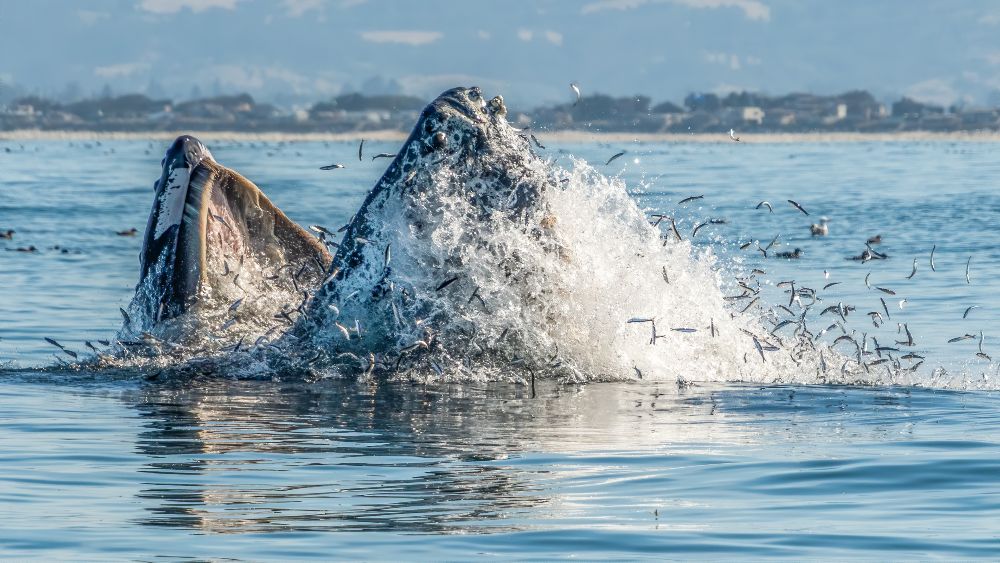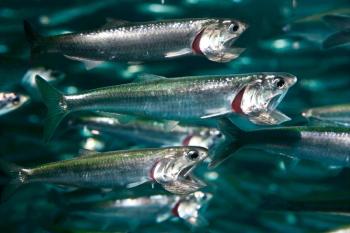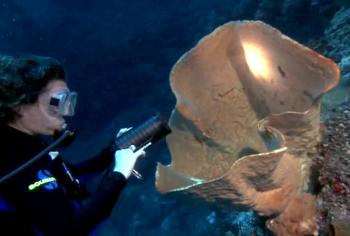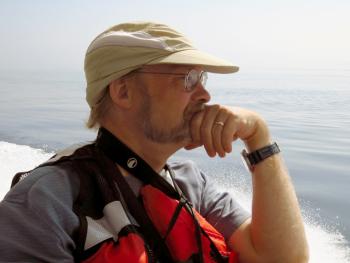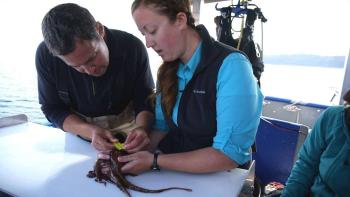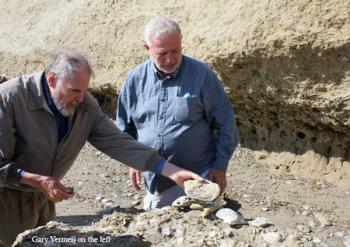
The ocean is losing its breath.
In the open ocean, warm water is the main cause of declining oxygen. Warm water holds less oxygen than cooler water. A warming ocean will have less oxygen available for animals to breathe. The decline in oxygen is already happening in some places and will get worse over the coming decades. “Fish are already moving to new waters in search of oxygen, and scientists are warning of the long-term threat to fish species and marine ecosystems” as the Yale Environment 360 writes.
The oxygen (O2) minimum layer is a natural feature of the world’s oceans, but it’s expanding to shallower depths as the ocean absorbs more heat. Research by scientists at Princeton University on expansion is illustrated in this 3D model of the Pacific Ocean. In the model the continents are white, and the ocean floor is gray. The colored O2 minimum zone is extending from the continents out into the ocean. It will get both wider and deeper.
Laure Resplandy, a co-author of the study and biogeochemical oceanographer at Princeton explains, “the expansion of the Pacific oxygen minimum zone’s outer layer will compress the habitat for commercially important marine species, such as anchovies, tuna and crabs. As the levels of oxygen go down, these species won’t be able to feed, swim, and reproduce unless they relocate to ocean regions with enough oxygen for them to breathe properly.”
Shaking the Ecosystem Up
Different animals have varied responses to low oxygen. These differences can cause ecosystem-wide changes, by altering the composition, diversity, abundance, and distribution of marine microbes and animals. Mobile animals can sometimes move away from low oxygen regions. However, this compression can still have large implications.
Commercially fished species have already shown habitat compression as a result of avoiding low oxygen. This habitat compression may cause species moving towards the surface to be at higher risk for predation or fisheries capture. Expanding O2 minimum zones may lead to more overfishing because low-oxygen zones will expand upward toward the ocean’s surface, making species easier to catch. This includes species vital to local and global marine ecosystem services, such as anchovies, sardines, billfishes, and tunas.
Anchovies—small silvery fish that travel in large schools—are a nutritionally-rich, foundational species for both fisheries and ecosystems off the coast of California. They have an outsized role in marine ecology. People eat them (we know not everyone is a fan) and they're food is for other fish that people eat, like mackerel. Researchers found that there is a strong correlation between the “breathability” of the ocean water and the abundances of Northern Anchovy found in a particular area.
Scientists predict that oxygen loss and higher water temperatures could reduce the present range of Northern Anchovies in the California Current ecosystem by 30-50% in 2100, according to a new study supported in part by California Sea Grant and the California Ocean Protection Council. This will have huge implications for everything from mackerel to pelicans to humpback whales, and more than 50 other species in the West Coast region.
